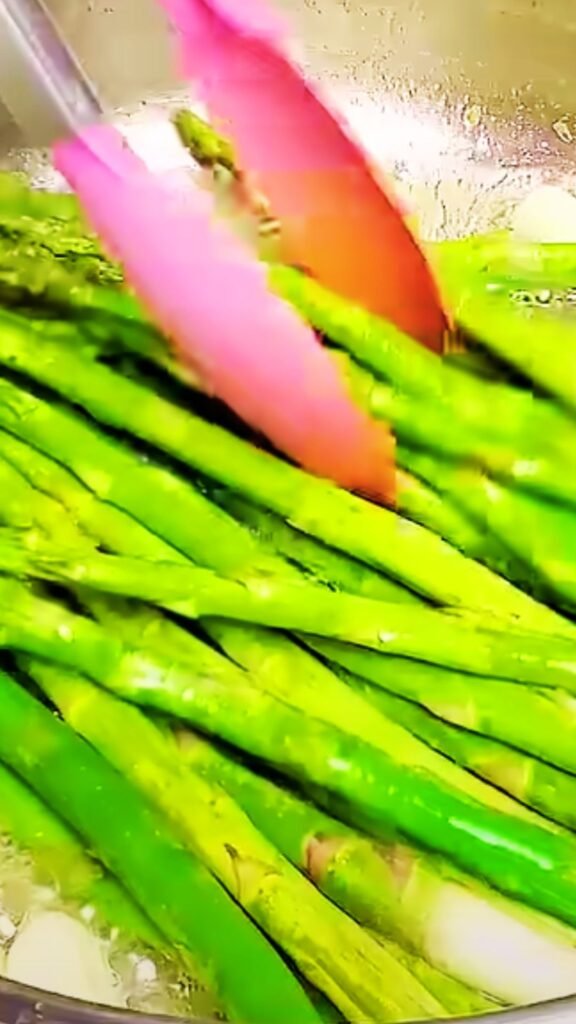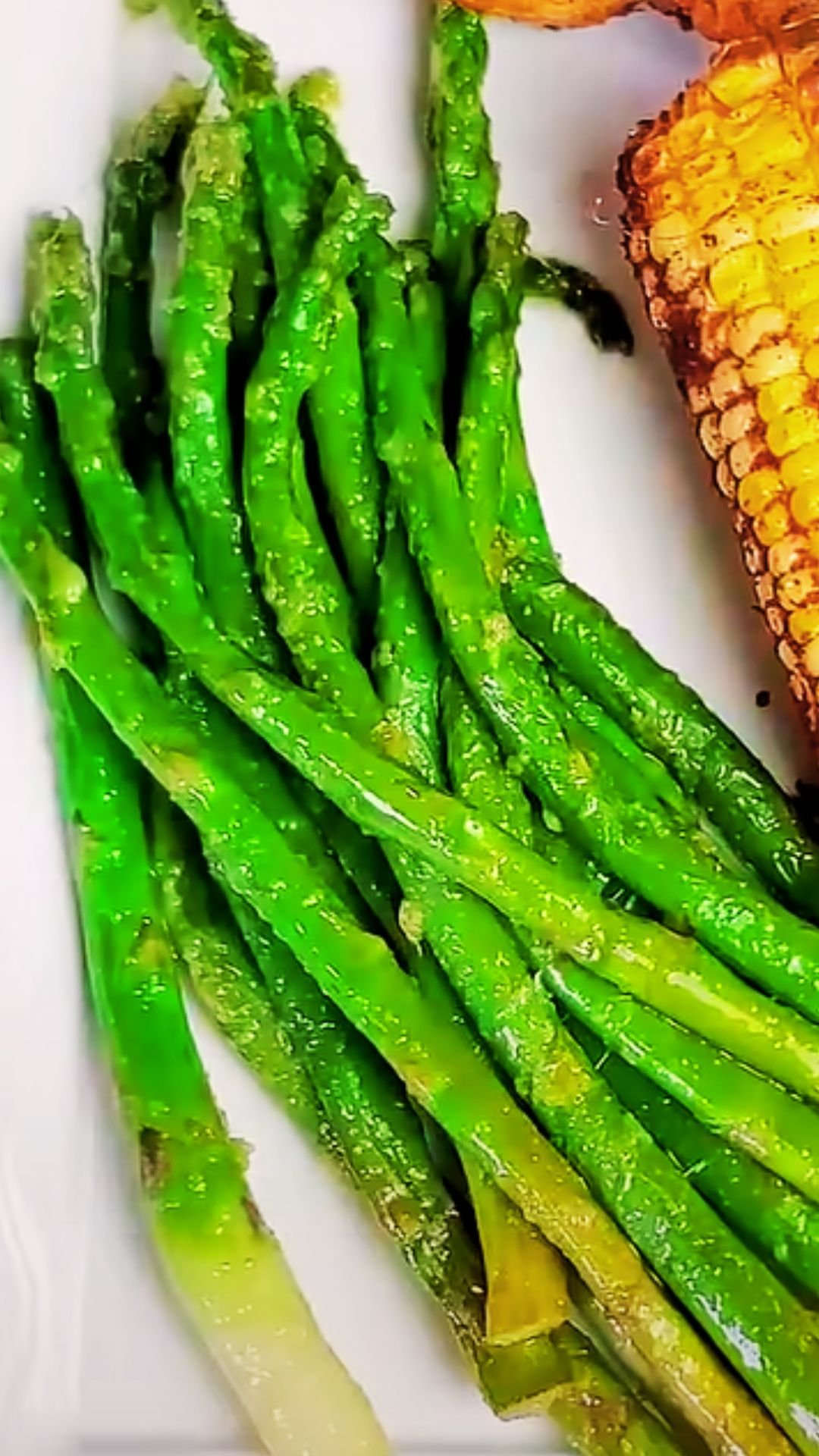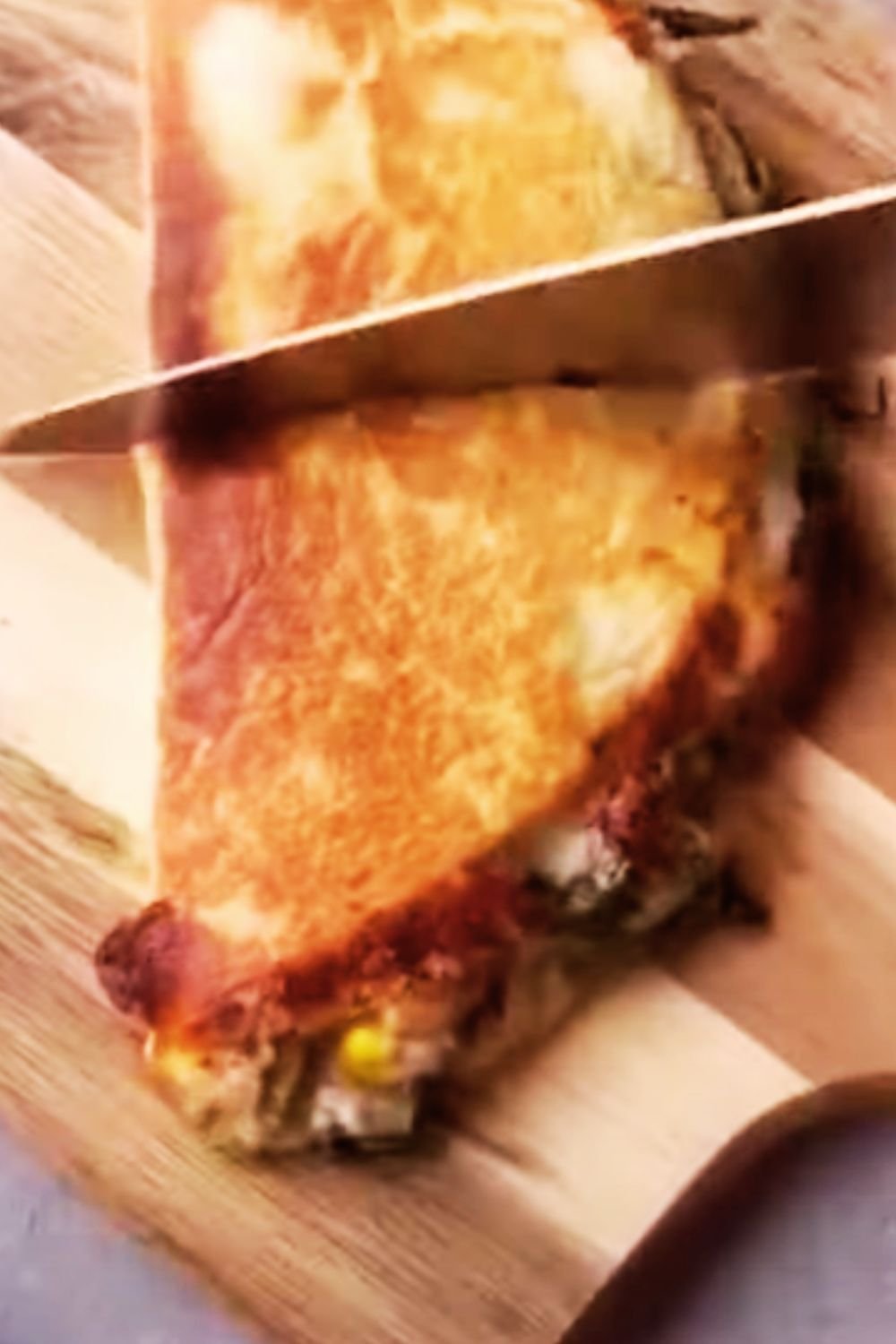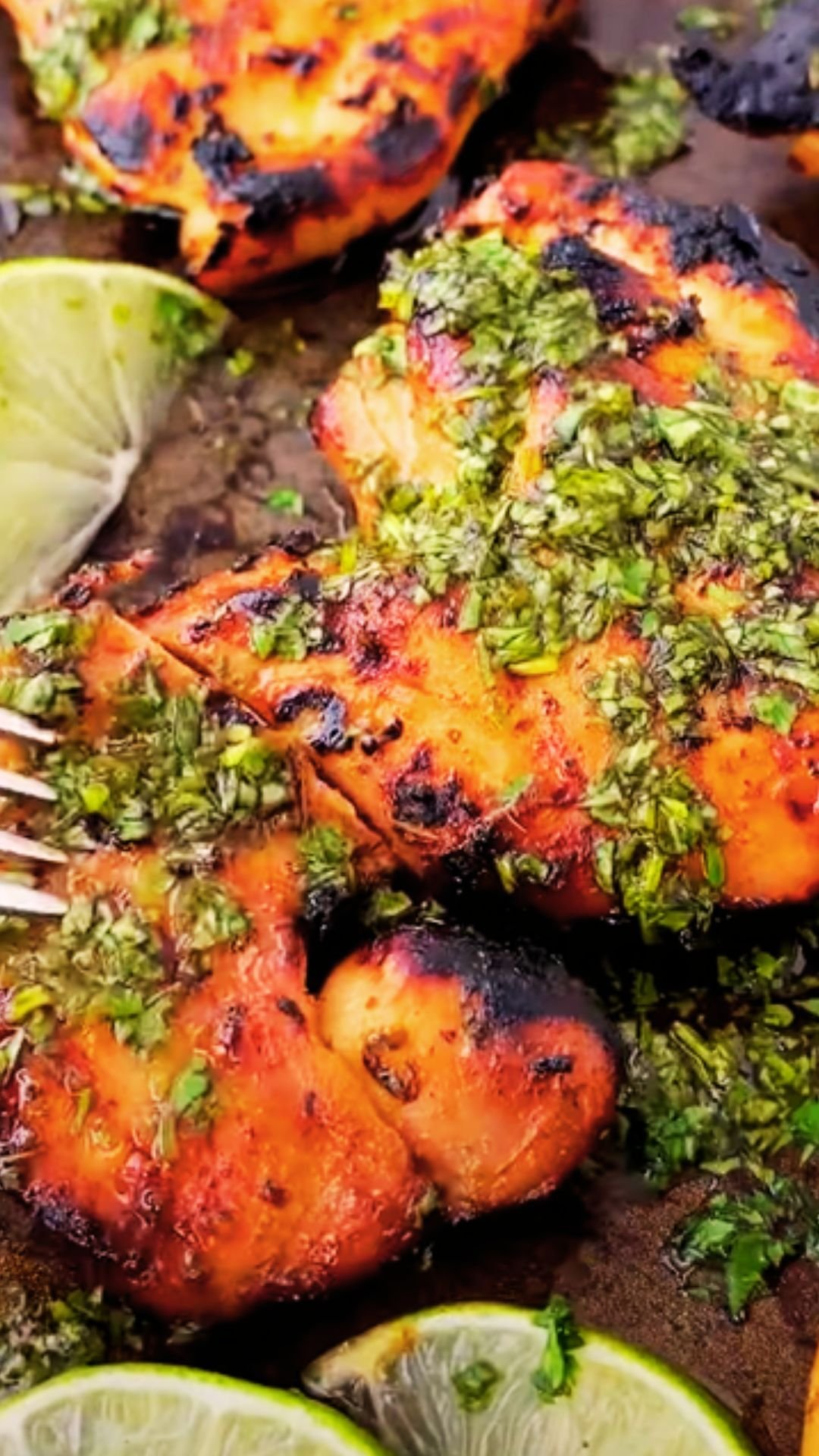I still remember the first time I truly appreciated asparagus. Growing up, I’d wrinkle my nose at those green spears on my plate, but everything changed when I discovered the magic of garlic butter asparagus. This simple yet elegant dish has become my go-to side for everything from weeknight dinners to special occasions, and I’m excited to share why it should be yours too.
The beauty of garlic butter asparagus lies in its simplicity. With just a handful of ingredients and minimal preparation time, you can create a side dish that elevates any meal. Whether you’re serving it alongside grilled chicken, pan-seared salmon, or a perfectly cooked steak, this recipe never fails to impress both family and guests.
Understanding Asparagus: The Star of Our Show
Before we dive into the cooking process, let me share what I’ve learned about selecting and preparing asparagus over the years. This knowledge has made all the difference in my cooking results.
Asparagus Selection Guide : Choose spears that are bright green with tight, compact tips : Avoid asparagus with woody stems or wilted appearance : Look for uniform thickness for even cooking : Fresh asparagus should snap cleanly when bent
Asparagus Thickness Categories : Thin spears (pencil-thin) cook quickly, ideal for delicate preparations : Medium spears offer the perfect balance of tenderness and substance : Thick spears require longer cooking but provide satisfying texture
The key to perfect garlic butter asparagus starts with quality ingredients. I always select asparagus spears that are firm to the touch with vibrant green color. The tips should be tightly closed, not flowering or spreading out. When I press gently on the stem, it should feel firm rather than soft or mushy.
Essential Ingredients and Kitchen Tools
My garlic butter asparagus recipe requires just five main ingredients, but the quality of each one matters tremendously. Here’s what I use and why:
| Ingredient | Quantity | Purpose | Selection Tips |
|---|---|---|---|
| Fresh Asparagus | 1.5 pounds | Main vegetable | Choose medium-thick spears for best texture |
| Unsalted Butter | 4 tablespoons | Rich flavor base | European-style butter provides superior taste |
| Fresh Garlic | 4-5 cloves | Aromatic enhancement | Firm cloves without green sprouts |
| Lemon Juice | 2 tablespoons | Bright acidity | Fresh-squeezed preferred over bottled |
| Sea Salt | 1 teaspoon | Flavor enhancement | Fine sea salt dissolves evenly |
| Black Pepper | ½ teaspoon | Seasoning | Freshly ground provides best flavor |
| Parmesan Cheese (optional) | ¼ cup grated | Umami depth | Freshly grated Parmigiano-Reggiano |
Essential Kitchen Tools : Large skillet or sauté pan (12-inch works perfectly) : Sharp paring knife for trimming : Cutting board (preferably wood or bamboo) : Garlic press or microplane grater : Tongs for turning asparagus : Paper towels for drying
I’ve found that using the right pan makes a significant difference. A heavy-bottomed stainless steel or cast-iron skillet distributes heat evenly, preventing hot spots that can cause uneven cooking. The pan should be large enough to arrange asparagus spears in a single layer without overcrowding.
Step-by-Step Preparation Method
My technique for garlic butter asparagus has evolved through years of practice. Here’s the method that consistently delivers restaurant-quality results:
Asparagus Preparation Steps:
- Washing and Trimming: I start by rinsing the asparagus under cool running water, paying special attention to the tips where sand and debris can hide. Pat them completely dry with paper towels – excess moisture can cause splattering when the asparagus hits the hot butter.
- Finding the Natural Break Point: Hold each spear at both ends and bend gently until it snaps naturally. This technique removes the tough, woody portion while preserving the tender part. The asparagus naturally breaks where the tender portion meets the tough stem.
- Optional Peeling: For thick spears (thicker than my thumb), I sometimes peel the lower third of the stems with a vegetable peeler. This ensures even cooking throughout the spear and creates a more refined presentation.
Cooking Process:
The cooking method I use creates perfectly tender asparagus with a slight bite, never mushy or overcooked. Here’s my step-by-step approach:
- Heat the Pan: Place your skillet over medium-high heat and let it warm for about two minutes. The pan is ready when a drop of water sizzles and evaporates immediately.
- Add Butter: Add the butter and let it melt completely. Watch for the moment when the butter stops foaming – this indicates the water has evaporated and you’re ready for the next step.
- Add Garlic: Add minced garlic to the butter and stir constantly for 30-45 seconds until fragrant. Be careful not to let it brown, as burnt garlic becomes bitter.
- Add Asparagus: Carefully place asparagus spears in the pan in a single layer. They should sizzle when they hit the hot butter – this sound tells you the temperature is perfect.
- Season and Cook: Sprinkle with salt and pepper, then cook for 3-4 minutes without moving them. This allows the bottom side to develop a slight caramelization.
- Turn and Finish: Using tongs, turn the spears over and cook for another 2-3 minutes until tender-crisp. The total cooking time depends on thickness – thin spears need less time, thick spears need more.
- Final Touch: Remove from heat and immediately squeeze fresh lemon juice over the asparagus. Toss gently to coat evenly.

Nutritional Benefits and Health Information
One reason I love serving garlic butter asparagus is its impressive nutritional profile. This dish provides significant health benefits while tasting absolutely delicious.
| Nutrient | Amount per Serving | Daily Value % | Health Benefits |
|---|---|---|---|
| Vitamin K | 56 mcg | 70% | Bone health, blood clotting |
| Folate | 52 mcg | 13% | Cell division, DNA synthesis |
| Vitamin C | 12 mg | 20% | Immune system support |
| Vitamin A | 905 IU | 18% | Eye health, immune function |
| Fiber | 2.8g | 11% | Digestive health |
| Potassium | 202 mg | 6% | Heart health, muscle function |
| Iron | 2.1 mg | 12% | Oxygen transport |
| Protein | 2.2g | 4% | Muscle maintenance |
Key Health Benefits : Antioxidant Power: Asparagus contains glutathione, a powerful antioxidant that helps protect cells from damage : Natural Diuretic: The amino acid asparagine supports kidney function and helps eliminate excess fluids : Blood Sugar Support: High fiber content helps regulate blood sugar levels : Heart Health: Folate and potassium support cardiovascular function : Digestive Health: Prebiotic fibers feed beneficial gut bacteria
The garlic in this recipe adds its own health benefits, including immune system support and cardiovascular benefits. However, I’m mindful that the butter adds calories and saturated fat, so I consider this a moderate indulgence rather than an everyday health food.
Timing and Serving Suggestions
Perfect timing has been crucial to my success with this dish. Garlic butter asparagus is best served immediately after cooking while it’s still hot and the butter is glossy and aromatic.
Ideal Serving Timeline: : 15 minutes before main course is ready: Start asparagus preparation : 8-10 minutes before serving: Begin cooking process : Immediately after cooking: Serve while hot and vibrant
Main Course Pairings:
I’ve served this asparagus with countless main dishes, and certain combinations have become my favorites:
- Grilled Proteins: The earthy asparagus complements grilled chicken, salmon, or pork tenderloin beautifully
- Roasted Meats: Pairs wonderfully with roasted beef, lamb, or turkey
- Pan-Seared Fish: Creates an elegant plate with halibut, cod, or sea bass
- Vegetarian Options: Complements mushroom risotto, quinoa pilaf, or stuffed portobello mushrooms
Presentation Ideas: : Arrange spears parallel on individual plates for elegant plating : Serve family-style on a large platter with lemon wedges : Garnish with fresh herbs like parsley or chives : Add a sprinkle of toasted pine nuts for extra texture

Advanced Techniques and Variations
After mastering the basic recipe, I’ve developed several variations that keep this dish interesting throughout asparagus season.
Flavor Variations I Love:
Mediterranean Style: Add sun-dried tomatoes, olives, and fresh basil during the last minute of cooking. The combination creates a vibrant, restaurant-quality side dish.
Asian-Inspired: Replace some butter with sesame oil and add a splash of soy sauce and rice vinegar. Garnish with toasted sesame seeds for authentic flavor.
Herb Garden: Incorporate fresh thyme, rosemary, or oregano with the garlic. Each herb brings its own personality to the dish.
Spicy Version: Add red pepper flakes or a pinch of cayenne for those who enjoy heat. Start with less – you can always add more.
Cooking Method Alternatives:
| Method | Time | Temperature | Best For |
|---|---|---|---|
| Pan-Searing | 6-8 minutes | Medium-high heat | Everyday cooking |
| Roasting | 12-15 minutes | 425°F oven | Large batches |
| Grilling | 8-10 minutes | Medium heat | Summer entertaining |
| Steaming | 4-6 minutes | Boiling water | Health-conscious preparation |
Roasting Method: Toss prepared asparagus with melted garlic butter, spread on a baking sheet, and roast at 425°F for 12-15 minutes. This method works well for larger quantities and creates slightly different texture.
Grilling Technique: Brush asparagus with garlic butter mixture and grill over medium heat, turning once. The slight char adds smoky flavor that’s particularly appealing in summer.
Storage and Meal Prep Tips
While garlic butter asparagus is best enjoyed fresh, I’ve learned techniques for meal prep and storage that maintain quality.
Storage Guidelines: : Refrigerator: Store cooked asparagus up to 3 days in airtight container : Reheating: Gentle reheating in skillet preserves texture better than microwave : Freezing: Not recommended as asparagus becomes mushy when frozen
Meal Prep Strategies:
I often prep components separately for busy weeknights:
- Wash and trim asparagus up to 2 days ahead, store in refrigerator
- Pre-mince garlic and store in olive oil in refrigerator
- Measure out seasonings in small bowls
Make-Ahead Options: : Blanch asparagus for 2 minutes, shock in ice water, drain and refrigerate : When ready to serve, sauté with garlic butter for 2-3 minutes : This method preserves color and texture while saving time
Troubleshooting Common Problems
Through years of making this dish, I’ve encountered and solved various challenges. Here are the most common issues and my solutions:
Problem: Mushy Asparagus Solution: Reduce cooking time and ensure spears are completely dry before cooking. Overcooking is the primary cause of mushy texture.
Problem: Burnt Garlic Solution: Lower heat and add garlic after butter has melted and stopped foaming. Burnt garlic tastes bitter and ruins the entire dish.
Problem: Uneven Cooking Solution: Choose spears of similar thickness and arrange in single layer without overcrowding. Cook in batches if necessary.
Problem: Greasy Texture Solution: Use less butter initially – you can always add more. Also, ensure pan is hot enough so butter doesn’t just sit on the asparagus.
Problem: Bland Flavor Solution: Season with salt during cooking, not just at the end. Taste and adjust seasoning before serving.
Seasonal Considerations and Shopping Tips
Living through many asparagus seasons has taught me when and how to shop for the best quality spears.
Peak Season Shopping: : Spring Peak: March through June offers best quality and prices : Local Sources: Farmers markets often have superior freshness : Storage at Home: Stand spears upright in water like flowers, cover with plastic
Off-Season Options: : Frozen Asparagus: Can substitute but requires adjusted cooking time : Imported Fresh: Available year-round but quality varies : Preparation Differences: Frozen asparagus releases more water, so pat extra dry
Quality Indicators Throughout Season: : Early Season: Thin, tender spears perfect for delicate preparations : Mid-Season: Medium spears offer best balance of flavor and texture : Late Season: Thick spears may require peeling but have intense flavor
Questions and Answers
Q. How do I know when the asparagus is perfectly cooked?
The asparagus should be tender-crisp, meaning it yields slightly to pressure but still has a bit of bite. I test by piercing the thickest part of a spear with a fork – it should go through easily but not feel mushy. The color should be vibrant green, not dull or olive-colored, which indicates overcooking.
Q. Can I make this recipe ahead of time for a dinner party?
While asparagus is best served immediately, I have a strategy for dinner parties. I blanch the asparagus earlier in the day, shock it in ice water, and store it in the refrigerator. When guests arrive, I quickly sauté the pre-blanched spears with garlic butter for 2-3 minutes. This preserves the color and texture while allowing me to time everything perfectly.
Q. What’s the best way to store leftover garlic butter asparagus?
I store leftovers in an airtight container in the refrigerator for up to three days. To reheat, I use a skillet over medium heat rather than the microwave, which tends to make the asparagus soggy. Add a small pat of butter to the pan to refresh the coating and heat gently until warmed through.
Q. My asparagus always turns out either undercooked or mushy. What am I doing wrong?
This usually comes down to timing and temperature control. Asparagus thickness varies significantly, so cooking time must be adjusted accordingly. Thin spears need only 4-5 minutes total, while thick spears might need 8-10 minutes. Also, make sure your pan is properly preheated – the asparagus should sizzle when it hits the butter.
Q. Is there a way to make this dish lighter without sacrificing flavor?
Absolutely! I sometimes use half butter and half olive oil, which reduces saturated fat while maintaining richness. You can also increase the lemon juice and add fresh herbs like parsley or chives, which provide flavor without calories. Another trick is to use a butter-flavored cooking spray at the end for extra butter taste without the calories.
Q. Can I use garlic powder instead of fresh garlic?
While fresh garlic provides the best flavor, garlic powder can work in a pinch. Use about 1/2 teaspoon of garlic powder for every clove of fresh garlic. Add it with the salt and pepper rather than sautéing it, since powder can burn easily. The flavor won’t be quite as bright and aromatic, but it’s still delicious.
Q. Why does my asparagus sometimes taste bitter?
Bitterness usually comes from overcooking the garlic or using asparagus that’s past its prime. Make sure to keep the heat at medium and watch the garlic carefully – it should be fragrant but not brown. Also, choose asparagus with tight tips and firm stems. If the tips are flowering or the stems feel soft, the asparagus may have a bitter taste.
Q. What’s the proper way to clean asparagus before cooking?
I rinse asparagus under cool running water, paying special attention to the tips where dirt and sand can collect. Sometimes I soak them in cool water for a few minutes if they seem particularly gritty. After washing, I pat them completely dry with paper towels – this is crucial because wet asparagus will cause the butter to splatter and won’t brown properly.
This garlic butter asparagus recipe has become one of my most requested dishes, and I hope it brings as much joy to your table as it has to mine. The combination of simple ingredients, quick preparation, and elegant results makes it perfect for any occasion. Whether you’re cooking for family or entertaining guests, this side dish never fails to impress and complement whatever main course you’re serving.


